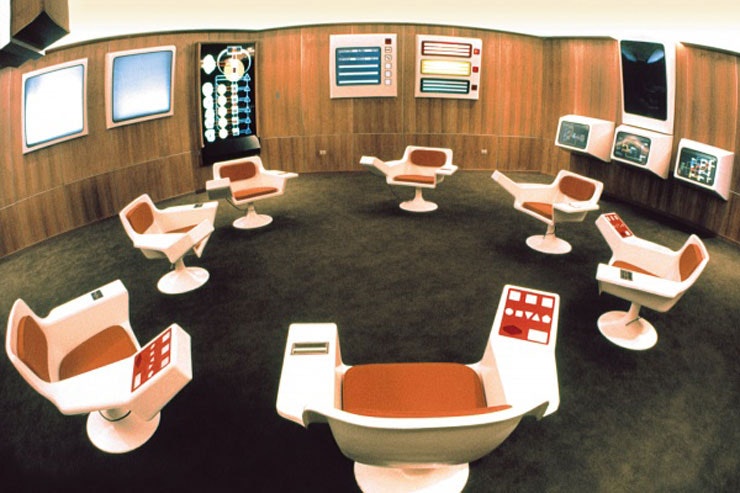Designing utopia: Chile’s great experiment in cybernetic control
Utopian visions by 37 nations at the inaugural London Design Biennale largely ignored the work economy - Chile’s Counterculture Room proved the exception to the rule
Can designers create utopia? That was the question asked by the first-ever London Design Biennale, which invited 37 different countries to create national pavilions on the theme of utopian thinking at Somerset House in London during September 2016.
Timed to mark the 500th anniversary of the publication of Thomas More’s classic text, Utopia, the London Design Biennale featured a mind-boggling array of utopian ideas.
Ranging from the practical to the political and poetic
These ranged from the practical (modular public wifi hotspots in Cuba, a country with poor internet access) to the political (a sustainable future city on the Mexican border with the USA by architect Fernando Romero as a riposte to Trump rhetoric) to the poetic (Austria’s kinetic light sculpture poised to unsteady itself at the slightest movement of visitors as a reflection of the fragility of utopia.)
Utopian workplace ignored
Amid the wealth of concepts, however, it was interesting to see how few of these national utopian concepts looked at work. Most preferred to explore utopian alternatives to the working economy – focusing on leisure time and space, personal reflection and meditation.
Russia’s daring presentation of the Lost Archives of Soviet Design showed an ambitious and abandoned vision for designing utopia in every branch of Soviet society, and rightly won one of the Biennale’s main medals.
But the nearest we got to a utopian work vision was Chile’s entry to the Biennale, which featured an experiment from the early 1970s by the socialist government of Salvador Allende to give the state a cybernetic backbone, enabling ministers to view economic information in real time and giving Chilean workers direct access to decision-making.
This exercise in electronic industrial democracy was called ‘Cybersyn’ and was executed by a brilliant, maverick, British cyberneticist called Stafford Beer who was invited to Santiago by Allende’s government to put his futuristic theories into practice.
Chile’s installation at the Biennale, The Counterculture Room (see above), reconstructed the Cybersyn’s operations room — a slice of 1970s high-tech design – and was one of the highlights of the Biennale.
The Cybersyn experiment failed, of course, and we all know what happened to Allende’s socialist government once the CIA and the Chilean military got into gear. But that’s the trouble with designing utopias – they are a fleeting vision and all but impossible to make real for any meaningful time. The history of the workplace design, not just Cybersyn, reminds us of that.








